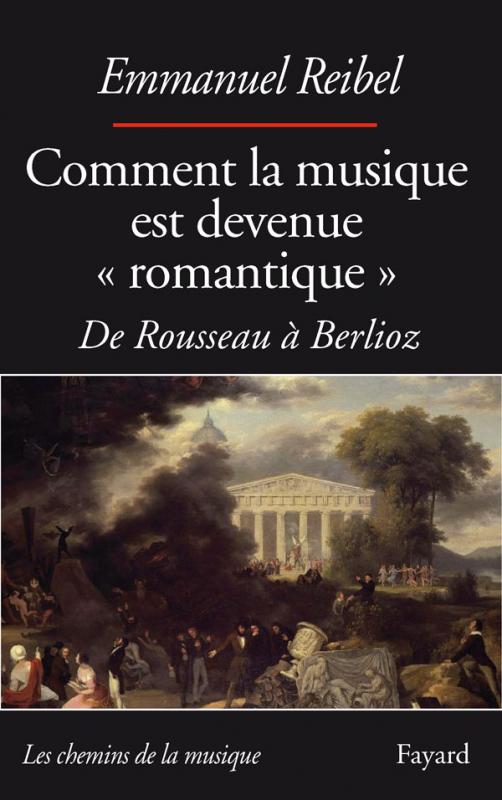Comment la musique est devenue "romantique", de Rousseau à Berlioz

Fondé sur des sources multiples rassemblées notamment selon des méthodes de dépouillements numériques systématiques, cet essai vise à comprendre la façon dont s’est progressivement construite, dans sa dynamique historique la catégorie du romantisme. Il cherche ainsi à montrer comment la musique est devenue « romantique », c’est-à-dire comment le discours esthétique a peu à peu sacralisé l’adjectif, par le biais de trois processus conjoints : un transfert artistique (le terme a glissé du lexique des paysages et de la littérature vers celui de la musique), un transfert culturel (issu des pays britanniques puis germaniques), une subtile stratification terminologique enfin (puisque de Rousseau à Berlioz, plusieurs sens sédimentèrent, entrèrent en tension ou en concurrence, avant de cristalliser partiellement en concept).
Paris, Fayard, 2013.
Prix François-Victor Noury de l'Académie française
Comptes rendus : Classicnews, Dissonance, Erudit, Crescendo, Music and Letters ; Présentation vidéo : Prix des muses.
This essay, which is based on a number of digitally mined sources (journalistic and critical writings, published scores, theoretical treatises and essays, correspondence, etc.), aims to determine how an aesthetic category was progressively constructed from a historical point of view. Instead of adopting a normative approach (“What is Romanticism?”), it uses a descriptive approach (asking “What was considered Romantic, and what was understood by Romanticism?”). In this way, it seeks to show how music became “Romantic”; in other words, how aesthetic discourse gradually gave weight to the adjective, through three related processes: artistic transfer (as the term spread from the landscape and literary lexicons to the musical lexicon), cultural transfer (from Britain to Germanic countries), and a subtle terminological stratification (as writers from Rousseau to Berlioz layered different meanings, they created tension or competition before partially crystallising a concept).
Building on recent work that reconsiders the artistic connection between the 18th and 19th centuries, I have adopted a vision of Romanticism that is neither generational nor essentialist but transgenerational and nominalist; a vision that is neither metaphysical nor a priori but hermeneutical and a posteriori (it sees Romanticism, like all aesthetic concepts, as a verbal intellectual construction that is used to describe and interpret a musical event given a set of artistic, political and ideological circumstances).
